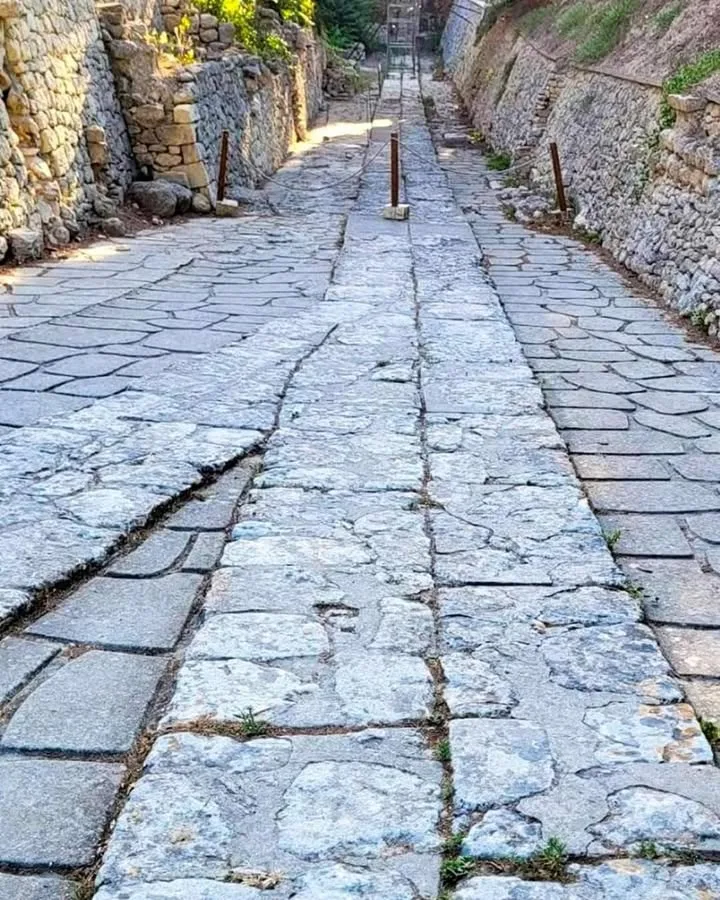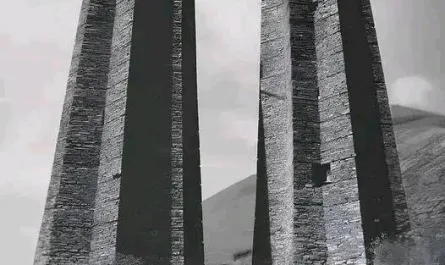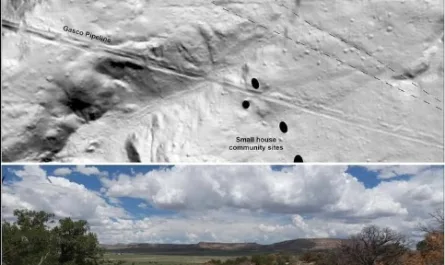Europe’s oldest known road, a remarkable testament to the engineering genius of the Minoan civilization, lies on the island of Crete, stretching across a rugged landscape that has witnessed over 3,500 years of history. This ancient roadway, spanning approximately 50 kilometers, connects the iconic city of Knossos—once the heart of Minoan culture—with the significant settlements of Gortyn and the coastal port of Lebena. As of 10:51 AM +07 on Saturday, July 19, 2025, this archaeological treasure continues to captivate scholars, historians, and travelers, offering a window into the sophisticated infrastructure of one of Europe’s earliest advanced societies.

A Glimpse into Minoan Ingenuity
The Minoan civilization, flourishing from approximately 2700 to 1450 BCE, left an indelible mark on history with its advanced architecture, art, and engineering. This road, constructed during this period, served as a critical artery for the bustling city of Knossos, a political, religious, and economic hub renowned for its sprawling palace complex. The route extended southwest to Gortyn, an important administrative center, and further to Lebena, a port facilitating maritime trade across the Mediterranean. Designed to withstand the island’s challenging terrain—marked by steep hills, seasonal rains, and seismic activity—the road’s enduring presence highlights the Minoans’ profound understanding of their environment and their ability to adapt to it. Its construction predates other known European roads by centuries, making it a pioneering achievement in the history of infrastructure.
Advanced Construction Techniques: A Masterclass in Engineering
The Minoan road stands out for its sophisticated construction, a feat that rivals modern standards of the time. The foundation consists of a robust 20-centimeter-thick pavement made from carefully selected sandstone blocks, meticulously fitted together and bound with a durable clay-gypsum mortar. This mortar, a mixture of clay and gypsum sourced from local quarries, provided exceptional strength and flexibility, allowing the road to absorb the stresses of heavy traffic and natural shifts. Above this base, a layer of basaltic flagstones—hard, volcanic stones quarried from Crete’s interior—was laid to create a smooth, hard-wearing surface. This upper layer ensured durability against the wear of carts, foot traffic, and the elements, while its flatness facilitated efficient travel.
One of the most innovative features is the inclusion of side drains, strategically carved along the road’s edges to manage water runoff during Crete’s rainy seasons. These drains, often lined with smaller stones, prevented erosion and water damage, preserving the road’s integrity over millennia. Another remarkable aspect is the presence of separate shoulders—raised or leveled areas flanking the main path—which were uncommon in contemporary road designs. These shoulders provided additional stability, prevented the roadbed from collapsing under load, and offered a safe space for pedestrians or animals to step aside, demonstrating a nuanced understanding of traffic management and safety.
Historical and Cultural Significance: A Lifeline of the Minoan World
This road was far more than a mere path; it was the backbone of Minoan society. It facilitated the transport of essential goods—olive oil, wine, pottery, and precious metals—fueling Crete’s thriving trade network with Egypt, the Levant, and the Aegean islands. The road also played a strategic role during times of conflict, enabling the swift movement of troops and supplies between Knossos and its outlying regions. Archaeologists have uncovered evidence of wheel ruts and worn sections, suggesting heavy use by ox-drawn carts and pack animals. Beyond its practical function, the road symbolized the Minoans’ organizational prowess and their ability to unify disparate communities, fostering cultural exchange and economic prosperity. Its influence can be seen in later Greek and Roman road-building techniques, cementing its place as a precursor to European infrastructure.
Environmental and Geological Context
Crete’s geological instability, marked by frequent earthquakes and a Mediterranean climate with wet winters and dry summers, posed significant challenges to the road’s construction and maintenance. The Minoans’ choice of materials—sandstone for its availability, basalt for its hardness, and clay-gypsum for its binding properties—reflects a deep knowledge of local geology. The side drains, in particular, were a critical adaptation to the island’s rainfall, channeling water away from the roadbed to prevent flooding and landslides. This foresight allowed sections of the road to survive intact, even as palaces and other structures crumbled, offering a rare glimpse into how the Minoans engineered for longevity in a volatile landscape.
Modern Exploration and Preservation Efforts
As of 10:51 AM +07 on July 19, 2025, portions of the Minoan road remain accessible to the public, though much of it is protected to prevent further deterioration. Visitors can walk along preserved stretches, surrounded by olive groves and wild herbs, imagining the bustling trade caravans of antiquity. Early morning visits, like now, are ideal, with the cool air and soft sunlight highlighting the stonework’s texture. Archaeologists employ advanced techniques such as ground-penetrating radar and 3D mapping to uncover buried sections and analyze construction details, revealing new insights into Minoan technology. Preservation efforts, supported by the Greek government and international organizations, focus on stabilizing the road with minimal intervention, ensuring it remains a living museum for future generations.
Practical Tips for Visitors
For those planning a visit at 10:51 AM +07 today, comfortable walking shoes are essential due to the uneven terrain, and hats or sunscreen are recommended as the day progresses. The site is typically open from dawn to dusk, with guided tours available to explain the road’s historical context. Photography is encouraged, though visitors are urged to stay on designated paths to protect the fragile stones. Local guides often share anecdotes about Minoan life, enhancing the experience with stories of trade, warfare, and daily routines.
Conclusion
The Minoan road on Crete is a remarkable legacy of human innovation, showcasing engineering techniques that were extraordinary over 3,500 years ago. Its advanced design—featuring side drains, a sturdy sandstone-basalt structure, and separate shoulders—reflects the Minoans’ mastery over their environment. As you stand on this ancient path at 10:51 AM +07 on July 19, 2025, it serves as a profound connection to the past, illuminating the ingenuity that shaped one of Europe’s earliest civilizations.





